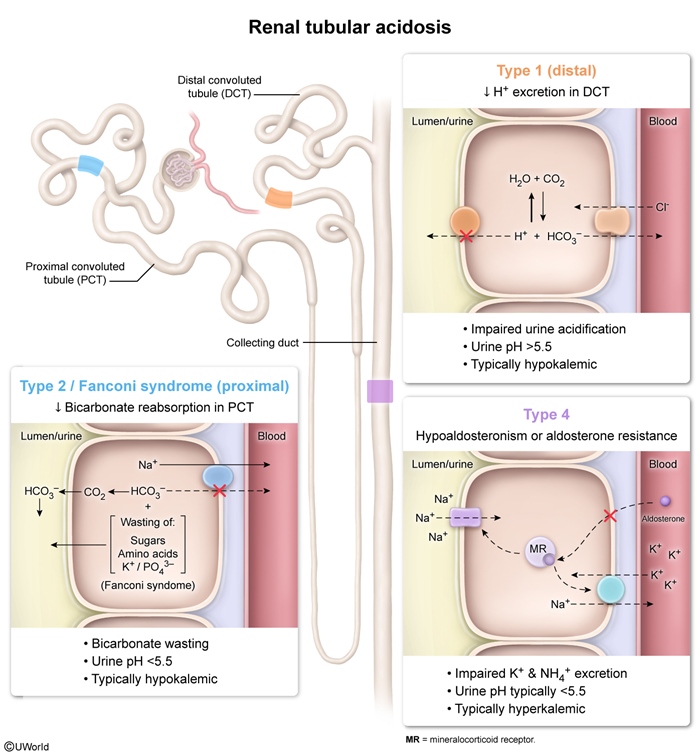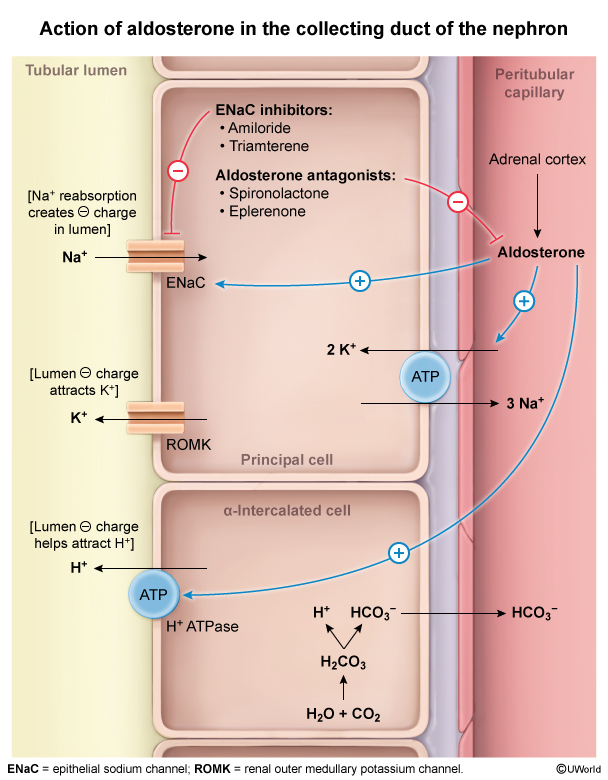Renal Tubular Acidosis
Article Sections
Introduction
Renal tubular acidosis (RTA) refers to a group of disorders characterized by an impaired ability of the renal tubules to maintain acid-base balance. The kidneys normally play a crucial role in preserving acid-base homeostasis by reabsorbing bicarbonate (HCO3-) and excreting hydrogen (H+). In RTA, these processes are disrupted, leading to chronic metabolic acidosis. Despite a normal glomerular filtration rate (GFR), the kidneys cannot effectively excrete acid or conserve bicarbonate. Early diagnosis and treatment are essential to prevent complications such as growth retardation in children, kidney stones, nephrocalcinosis, and progression to chronic kidney disease (CKD).
Classification
RTA is classified into 3 major types based on the specific defect in the renal tubules (Figure 1). While the pathophysiology differs among the types, all forms of RTA share a common feature: the kidney's
Continue Learning with UWorld
Get the full Renal Tubular Acidosis article plus rich visuals, real-world cases, and in-depth insights from medical experts, all available through the UWorld Medical Library.
Figures

